November 19, 2018
Lesson: Solve Problems With Proactive Support
Help your customers help themselves with proactive support to grow engagement, loyalty, customer lifetime value, and referrals.
There are so many ways to give your customers a wow customer experience, but proactive support has to be one of our favorites. Why? Because it’s so easy to get it right and make a real impact, yet so many companies overlook it. Stand out from the crowd and your customers will not only love you for it—they’ll reward you for it.
In this lesson, you’ll learn:
- Why good customer support is so important
- What proactive support is and why you should adopt it
- How to transition from reactive to proactive support
- How to use Autopilot for proactive support
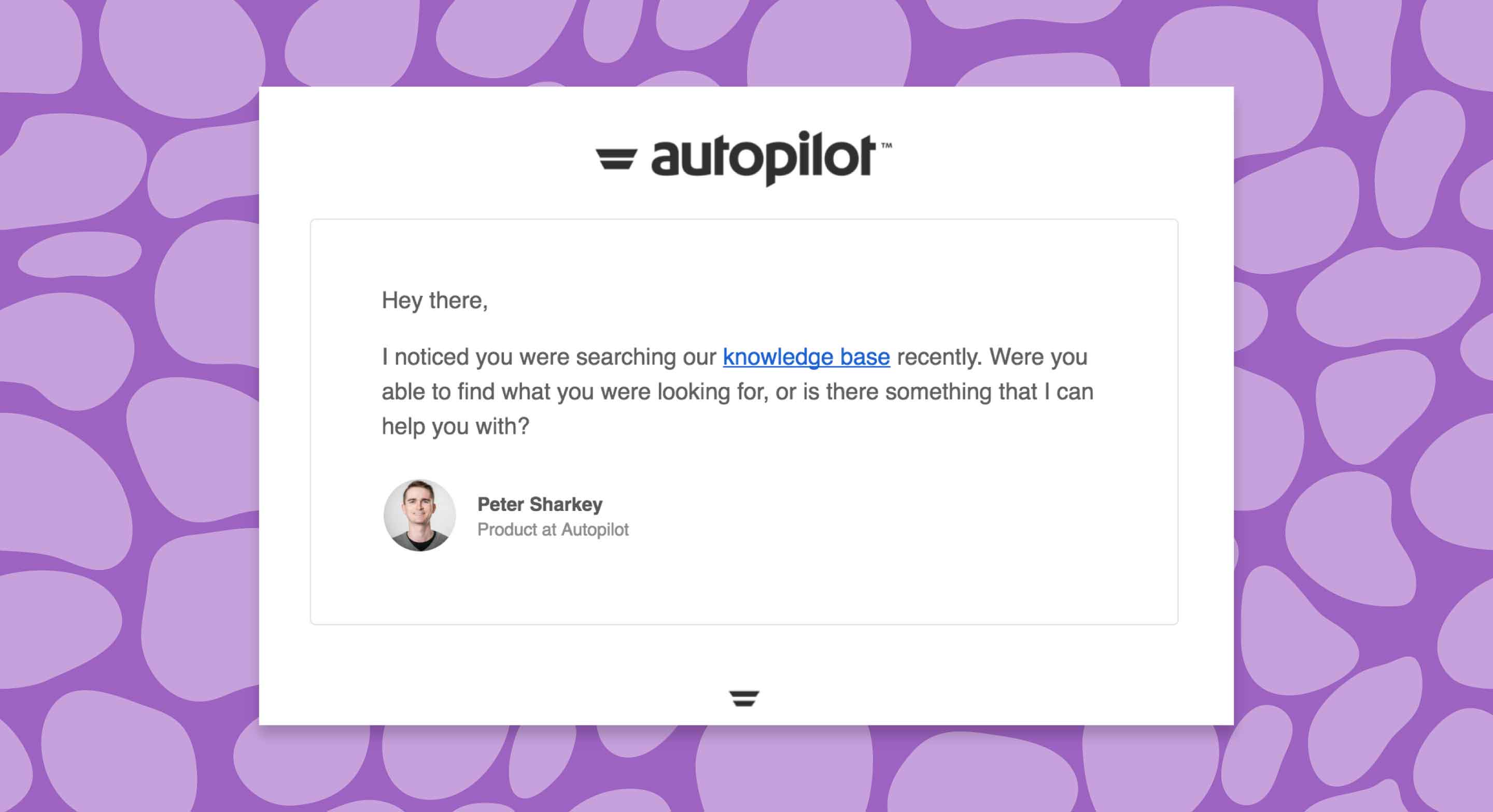
Example of offering proactive support from Autopilot
Why good customer support is so important
Most people have a love/hate relationship with customer support. If it’s good, it’s great. You get a quick, informative, helpful response that sets you on the right path and makes you feel good about your investment. But if it’s bad, it’s awful. Surveys show that 91% of users will take action after a negative customer experience—typically via social media channels, where there’s no option to duck and take cover.
Rest easy, because there’s good news: Awful customer support experiences are preventable, and the great experience we’re all striving for is well within reach.Key to this is understanding the main frustrations that users face with traditional support methods and how you can change and/or resolve these through proactive support.
Awful customer support experiences are preventable, and the great experience we’re all striving for is well within reach
Let’s dig into common support frustrations. In 2016, NewVoiceMedia conducted a survey which revealed that U.S. companies are losing upwards of $62 billion per year as a result of poor customer support. Top frustrations voiced by users included:
- Feeling unappreciated
- Unhelpful or rude staff
- Being passed around to multiple agents
- Not being able to speak to a real person
- Not being able to get the correct answers
- Being kept on hold for too long
Most of these frustrations are wrapped up in traditional support methods, which typically revolve around reactive support.
Consider this common scenario: A user has a question and navigates to your “Contact Us” page in search of a communication point. More often than not, these pages direct users to a support email address, phone number, or both—enabling them to email or call, then await your response. In the best case scenario, they wait a matter of minutes. In most cases, however, waiting for a response takes hours or even days.
72% of businesses now cite improving the customer experience as their top priority
This approach hasn’t worked well for companies with resource-strapped support teams, who cannot react quickly enough—leading to unsatisfied and unhappy customers who’re likely to look elsewhere for their goods and/or services.
Recently, there has been a shift in attitude toward the importance of quality support. In fact, a 2016 Forrester study found that 72% of businesses now cite improving the customer experience as their top priority. Enter: proactive support.
What proactive support is and why you should adopt it
Proactive support is the ability to anticipate issues and pain points that your customers might experience before they experience them.
It allows you to put preventative measures in place to ensure they don’t become a barrier to success. You can do this by providing your customers with the materials they need to answer (or circumvent) the questions themselves, while making your support team accessible across a wide range of channels.
Proactive support is the ability to anticipate issues and pain points that your customers might experience before they experience them
Unlike reactive support, which is primarily aimed at existing (and often frustrated) customers, proactive support can be a unique opportunity to reduce your number of support tickets, drive customer engagement and loyalty, and increase word-of-mouth referrals.
If you can identify common hurdles, create educational content that helps your customers before they realize they need your help, and take initiative in your support efforts, you’re destined to deliver a wow customer experience.
But don’t just take our word for it. Here’s a 5-star review we received on G2 Crowd, all thanks to our proactive support efforts:
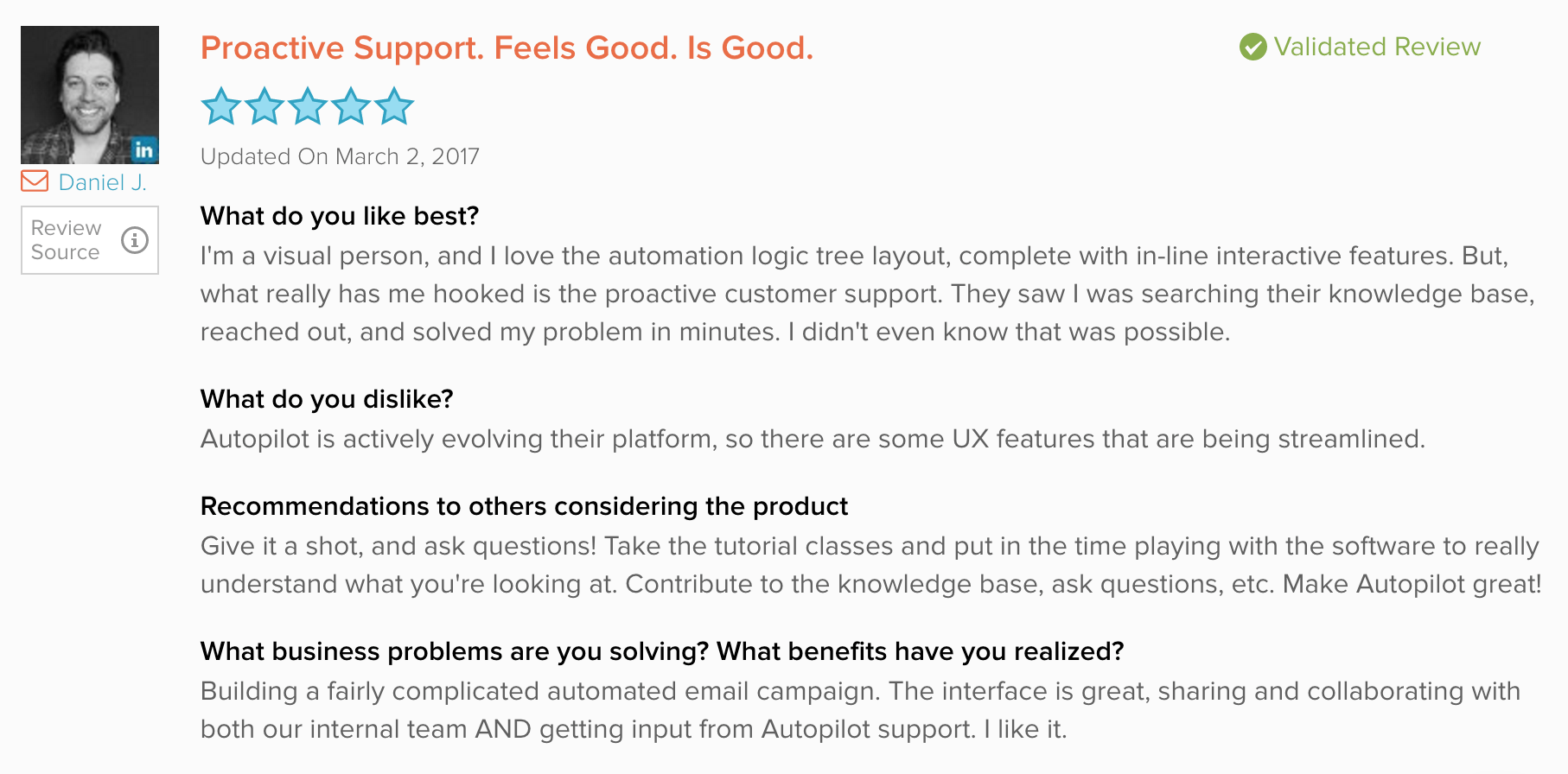
A 5-star review Autopilot received on G2 Crowd thanks to proactive support efforts
How to move from reactive to proactive support
There are three secrets to moving from reactive to proactive support:
1. Know your support audience. How and when do they engage? What do they need help with most?
2. Build an armory of support resources. Ensure your customers have all the information they need to solve problems before they become problems.
3. Deliver effective support proactively. Doing so will surprise and delight your customers.
Ensure your customers have all the information they need to solve problems before they become problems.
Know your support audience
It might sound trivial, but understanding how, when, and why your customers engage with your support team is critical to building a proactive support process.
Here are two tips for identifying the _how_ and when:
- Pinpoint the main avenues your customers have to get in touch with you.Do you have a contact page dedicated to support questions? What about a product knowledge base or help center? Is there a support link in your emails?
- Identify milestones that necessitate support. Are most of your customers looking for support during your free trial window? Or in the first month following conversion? Do you typically see a bunch of questions come through after they’ve performed a certain action (e.g., made a purchase, completed a specific onboarding task)?
Understanding how, when, and why your customers engage with your support team is critical to building a proactive support process
Here are our top tips for identifying the why:
- Talk to your customers! Ask them what they’d like to see more of when it comes to your support documentation.
- Analyze your support tickets, both old and new. Is there a common theme or set of frequent requests?
- Create a Feedback Forum on your site and make it readily available from your website (i.e., it could live on your contact page or within your site navigation bar).
- Send a short survey to your customers, then collate their feedback to discover patterns.
Once you understand how your customers are engaging with your support team, when it’s most likely to happen, and why they’re doing it, you can begin to build your armory of support documentation and self-help guides.
Autopilot's Help Center where users can find all support documentation
Source: Autopilot
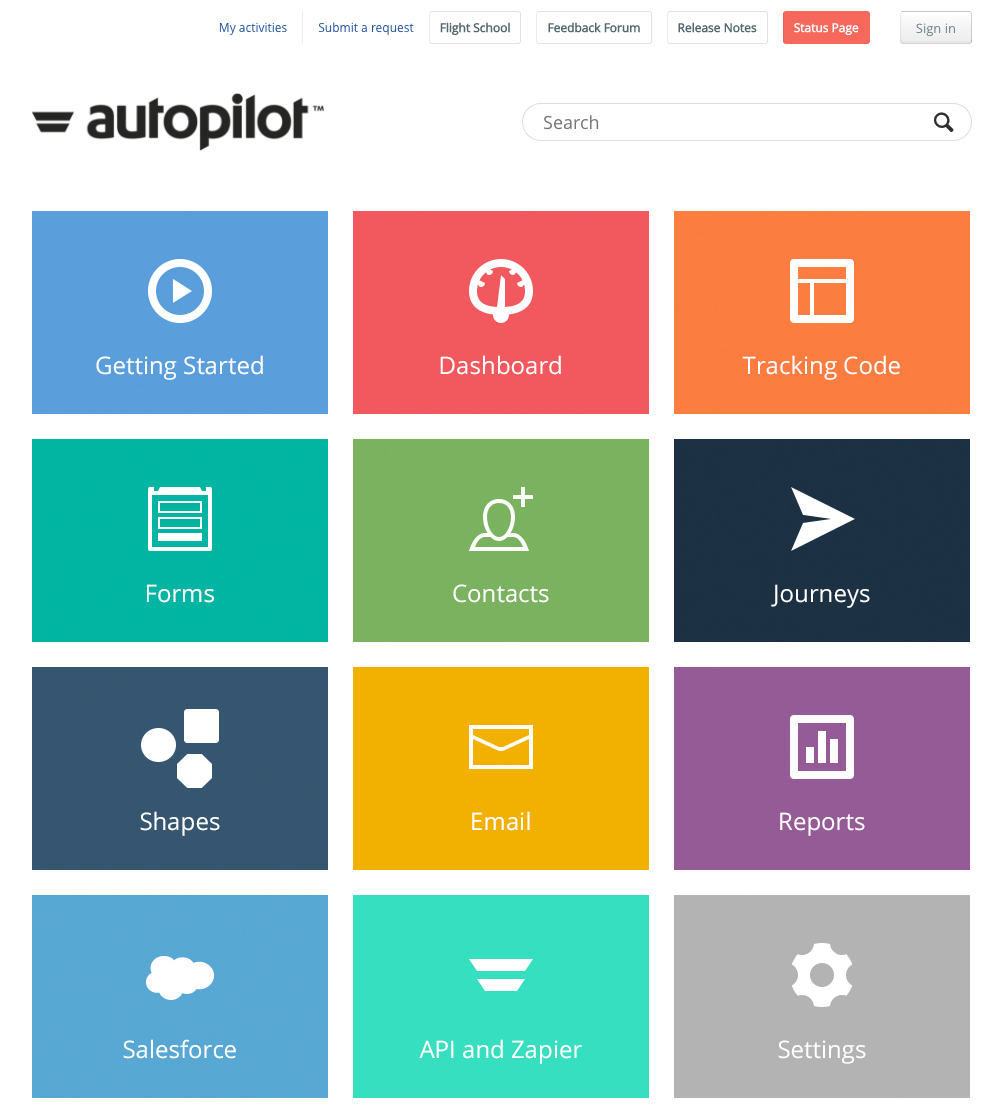
Build an armory of support resources
This is where you’ll want to spend the majority of your time and effort. It’s a big task, but one that’ll reap benefits for months and years to come—resulting in fewer support tickets, happier customers, and 5-star reviews.
If you’re looking for a bit of inspiration, we’ve found that the following formats work magic with both new and long-term customers:
- Training Webinars
- Short training videos and GIFs
- Support articles
- FAQs
- Blog posts
- Product guides
- Regular product updates
Having these support resources available while putting proactive outreach processes in place will make it easier for you to share relevant information at key stages in the customer’s lifecycle. Plus, it allows you to stay one step ahead of those help requests.
Deliver effective support proactively
You’ve taken the time to build out a best-in-class repertoire of support documentation. Now you might be wondering, “How do I best deliver support to my customers at just the right moment?”
We recommend building out a support engagement timeline to anticipate questions at various touchpoints. What might your customer need when they sign up for a trial account, complete their first purchase, or visit your support page?
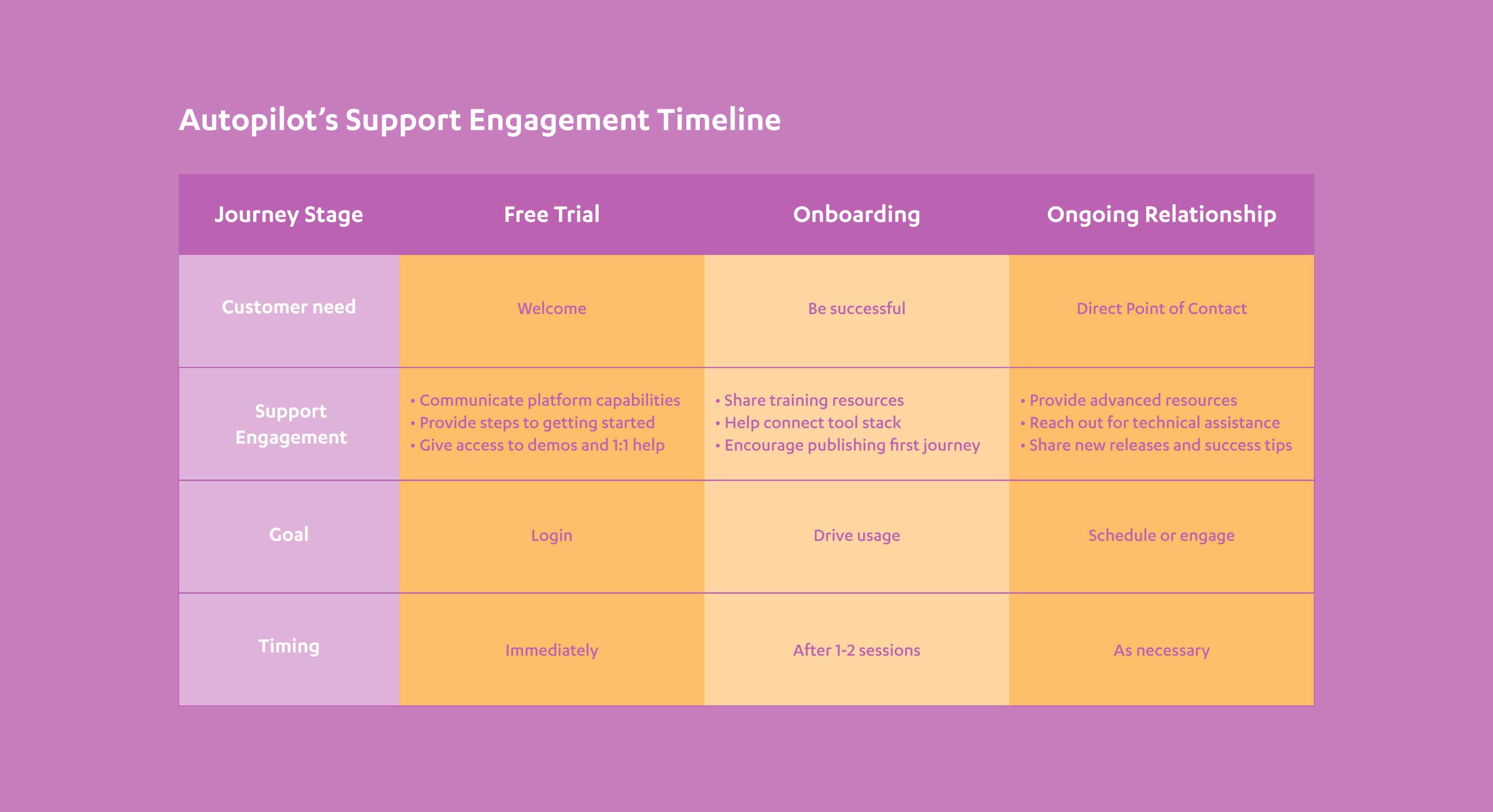
Example of Autopilot's support engagement timeline
Once you’ve developed your timeline, determine your audience’s preferred engagement channels:
- Headsup messages
- SMS
- Phone outreach
- Social media
The key is to anticipate pain points, then provide customers with just the right tools to avoid them.
In the next section, we’ll share an example of a proactive support journey using Autopilot (and our results).
The key is to anticipate pain points, then provide customers with just the right tools to avoid them
How to use Autopilot for proactive support
Here at Autopilot, we use Zendesk to manage our support tickets and host our knowledge base. This means that we have access to a host of reports, including commonly searched terms.
While this is incredibly useful, it still doesn’t give us an in-depth picture of the problems customers are trying to solve or whether we’re able to solve this problem for them. Because these reports aren’t personalized, we similarly can’t know who needs help and specifically what they need help with. So we decided to use our own platform to conduct an experiment: Could we be more proactive in our approach?
The Experiment
Set up a smart segment within Autopilot to identify anyone who searches our Zendesk support portal:
Autopilot's smart segment that captures anyone who searches our Zendesk support portal
Whenever a contacts enters this segment, notify the team via Slack for maximum transparency.

Autopilot's internal Slack notification, which is sent every time a contact searches our Zendesk support portal
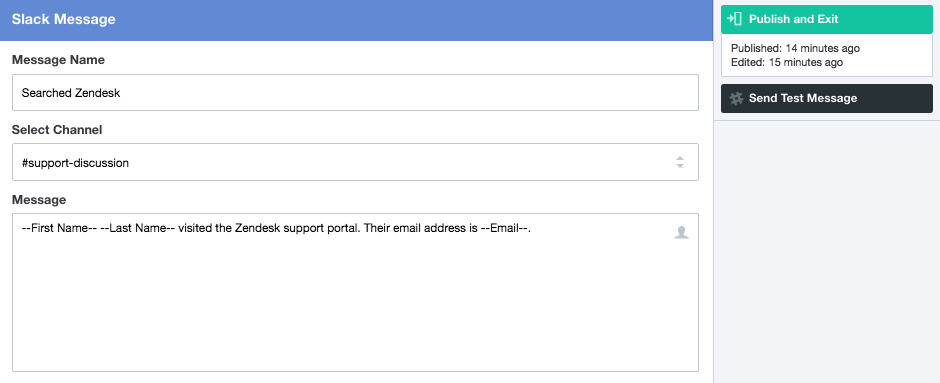
Wait 30 minutes, then send a personalized email to that contact, asking if they found what they were looking for.
The email that's sent every time a contact searches our Zendesk support portal
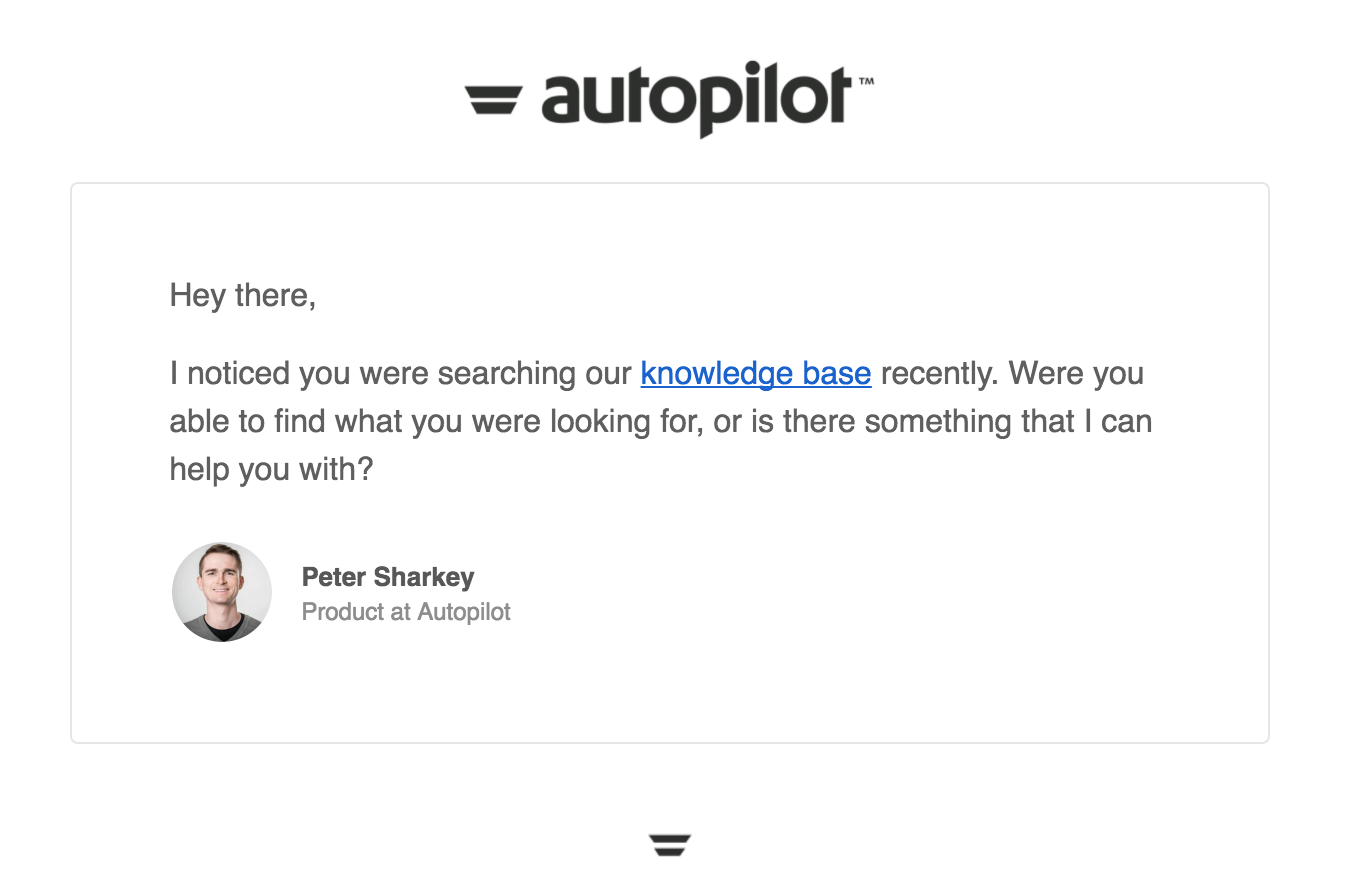
The 30-minute delay helps us avoid emailing someone too quickly. After all, it wouldn’t be as effective if the person received the email mere moments after they performed their search.
We also configured the email so it wouldn’t be sent again if they came back another day and performed the same search. We don’t want to be too pushy, after all.
Here’s the full journey in action:
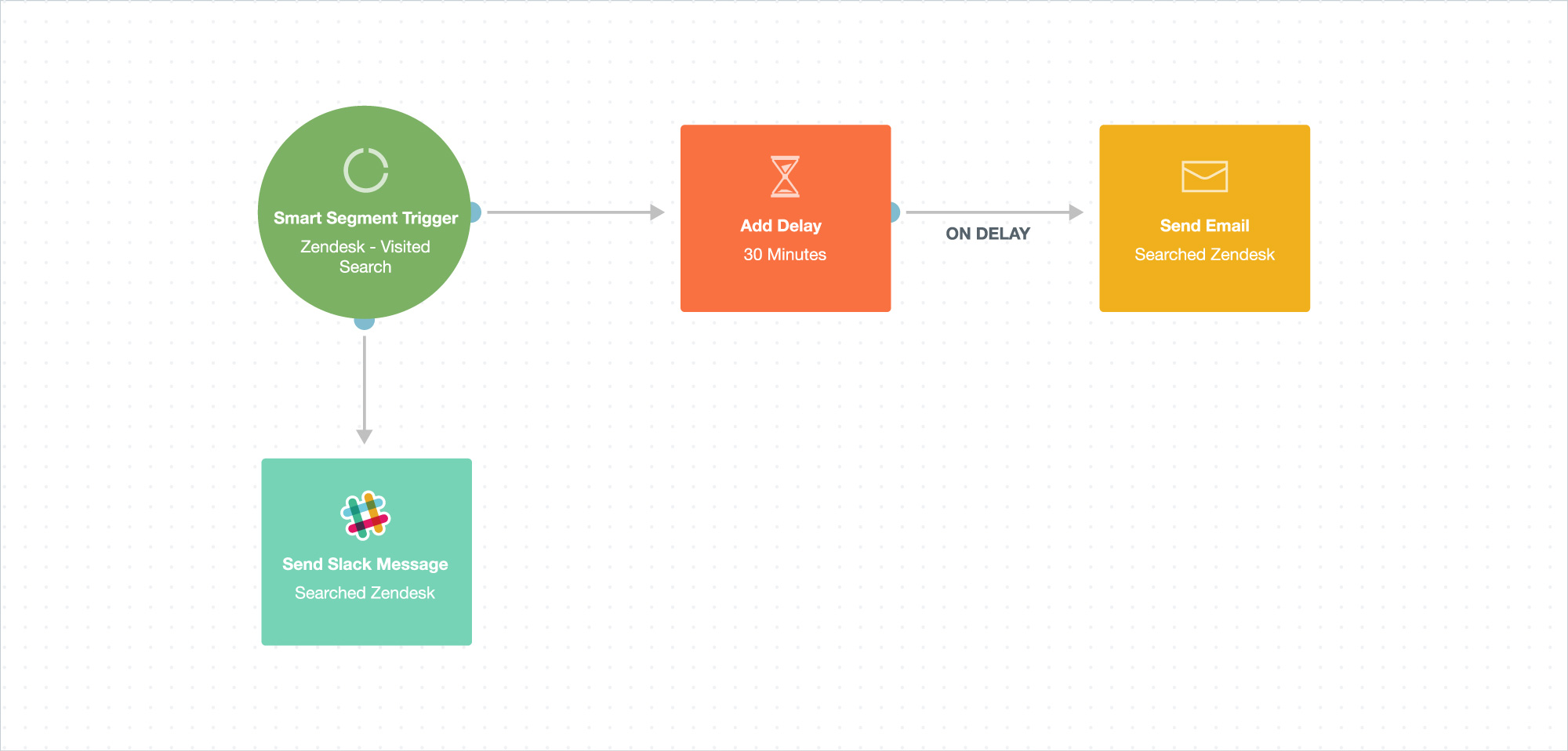
Autopilot's proactive support journey
The Results
When we kicked off this experiment, we thought it would go one of two ways: Either people would think it’s creepy… or they’d appreciate the help. Luckily, the latter was true. In fact, many people went out of their way to tell us how much they appreciated the offer.
In less than two weeks, we sent emails out to 96 people who searched our Zendesk support page. Of those, 61 opened it (63.5% open rate) and 25 replied (26% reply rate). Two were existing customers, while the remainder had signed up for a free trial of Autopilot.
Of those 25 responses, 14 couldn’t find the information they needed to answer their question, two said they found what they were looking for, four wanted to set up a demo call to learn more about Autopilot, and five wanted to know if Autopilot had a particular feature.
The feedback we gathered from this process was invaluable. It helped us make many articles more clear, and motivated us to add several new articles to our knowledge base. It also enabled us to start conversations with leads and gather product feedback that might have otherwise been missed.
Today, this journey is one of our core proactive support journeys. To date, we’ve had over 850 responses and a mind-boggling number of people who’ve raved about this outreach.









